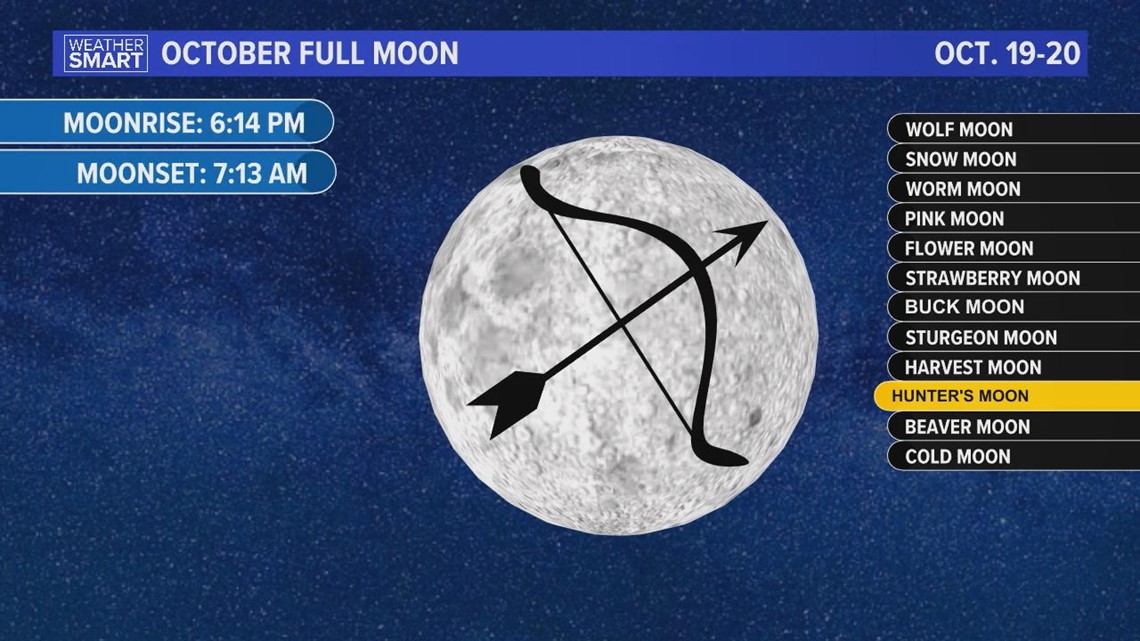YORK, Pa. — There are a few reasons starwatchers will want to keep their eyes to the sky this month.
Coming up this week is the Draconid meteor shower. This short-lived meteor shower peaks the night of October 8th and is best seen from the Northern Hemisphere.
Unlike viewing conditions for other meteor showers, the best time to see the Draconid meteor shower is in the early evening through about midnight.
This shower is unlikely to produce a grand show, with about five meteors an hour. Cloudy viewing conditions this week will also dampen any hopes of seeing much from the celestial event.
The full moon of October, called the Hunter’s Moon, can be seen as it sets on the morning of October 20th. The moon will also appear more than 99% lit as it rises on October 19th and 20th.
Moonrise in Harrisburg on October 19th will be at 6:14 pm with moonset the following day occurring at 7:13 am.
The name “Hunter’s Moon” comes from the previous full moon of the year, the Harvest Moon from back in September. Historically, after a harvest, farmers would turn to hunting deer and other animals in anticipation of the winter, thus the name of the October full moon according to EarthSky.


A second meteor shower will move through our skies towards the end of the month; the Orionid meteor shower. These meteors pass through the sky all month long, though they are expected to peak the morning of October 21st.
The meteors from this shower are debris left from the famous Halley’s Comet. Though we won’t see the comet itself this year. Halley’s Comet will not pass through our skies again until 2061.
In a year when the moon is not in the way, this meteor shower can produce 10 to 20 meteors an hour. However, we will just be coming off of the October full moon around the peak of the shower this year, so viewing conditions will be a little more difficult due to increased light pollution.

